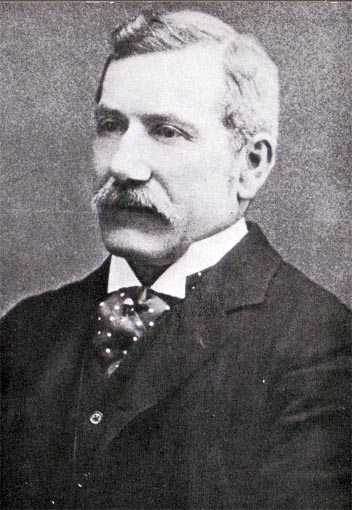|
Profiling (other)
{{Disambiguation ...
Profiling, the extrapolation of information about something, based on known qualities, may refer specifically to: Technology *Profiling (information science) in information science *Profiling (computer programming) in software engineering *DNA profiling Other *Author profiling *Data profiling *Forensic profiling, used in several types of forensic science *Offender profiling *Racial profiling *Sexual orientation profiling *Geographic profiling See also *Profile (other) Profile or profiles may refer to: Art, entertainment and media Music * ''Profile'' (Jan Akkerman album), 1973 * ''Profile'' (Githead album), 2005 * ''Profile'' (Pat Donohue album), 2005 * ''Profile'' (Duke Pearson album), 1959 * '' ''Profi ... [...More Info...] [...Related Items...] OR: [Wikipedia] [Google] [Baidu] |
Profiling (information Science)
In information science, profiling refers to the process of construction and application of user profiles generated by computerized data analysis. This is the use of algorithms or other mathematical techniques that allow the discovery of patterns or correlations in large quantities of data, aggregated in databases. When these patterns or correlations are used to identify or represent people, they can be called ''profiles''. Other than a discussion of profiling ''technologies'' or ''population profiling'', the notion of profiling in this sense is not just about the construction of profiles, but also concerns the ''application'' of group profiles to individuals, e. g., in the cases of credit scoring, price discrimination, or identification of security risks . Profiling is being used in fraud prevention, ambient intelligence, and consumer analytics. Statistical methods of profiling include Knowledge Discovery in Databases (KDD). The profiling process The technical process ... [...More Info...] [...Related Items...] OR: [Wikipedia] [Google] [Baidu] |
Profiling (computer Programming)
In software engineering, profiling ("program profiling", "software profiling") is a form of dynamic program analysis that measures, for example, the space (memory) or time complexity of a program, the usage of particular instructions, or the frequency and duration of function calls. Most commonly, profiling information serves to aid program optimization, and more specifically, performance engineering. Profiling is achieved by instrumenting either the program source code or its binary executable form using a tool called a ''profiler'' (or ''code profiler''). Profilers may use a number of different techniques, such as event-based, statistical, instrumented, and simulation methods. Gathering program events Profilers use a wide variety of techniques to collect data, including hardware interrupts, code instrumentation, instruction set simulation, operating system hooks, and performance counters. Use of profilers The output of a profiler may be: * A statistical ''sum ... [...More Info...] [...Related Items...] OR: [Wikipedia] [Google] [Baidu] |
DNA Profiling
DNA profiling (also called DNA fingerprinting) is the process of determining an individual's DNA characteristics. DNA analysis intended to identify a species, rather than an individual, is called DNA barcoding. DNA profiling is a forensic technique in criminal investigations, comparing criminal suspects' profiles to DNA evidence so as to assess the likelihood of their involvement in the crime. It is also used in paternity testing, to establish immigration eligibility, and in genealogical and medical research. DNA profiling has also been used in the study of animal and plant populations in the fields of zoology, botany, and agriculture. Background Starting in the 1980s, scientific advances allowed the use of DNA as a material for the identification of an individual. The first patent covering the direct use of DNA variation for forensicsUS5593832A was filed by Jeffrey Glassberg in 1983, based upon work he had done while at Rockefeller University in the United States in 1981. ... [...More Info...] [...Related Items...] OR: [Wikipedia] [Google] [Baidu] |
Author Profiling
Author profiling is the analysis of a given set of texts in an attempt to uncover various characteristics of the author based on stylistic- and content-based features, or to identify the author. Characteristics analysed commonly include age and gender, though more recent studies have looked at other characteristics like personality traits and occupation Author profiling is one of the three major fields in Automatic Authorship Identification (AAI), the other two being authorship attribution and authorship identification. The process of AAI emerged at the end of the 19th century. Thomas Corwin Mendenhall, an American autodidact physicist and meteorologist, was the first to apply this process to the works of Francis Bacon, William Shakespeare, and Christopher Marlowe. From these three historic figures, Mendenhall sought to uncover their quantitative stylistic differences by inspecting word lengths. Although much progress has been made in the 21st century, the task of author profili ... [...More Info...] [...Related Items...] OR: [Wikipedia] [Google] [Baidu] |
Data Profiling
Data profiling is the process of examining the data available from an existing information source (e.g. a database or a file) and collecting statistics or informative summaries about that data. The purpose of these statistics may be to: # Find out whether existing data can be easily used for other purposes # Improve the ability to search data by tagging it with keywords, descriptions, or assigning it to a category # Assess data quality, including whether the data conforms to particular standards or patterns # Assess the risk involved in integrating data in new applications, including the challenges of joins # Discover metadata of the source database, including value patterns and distributions, key candidates, foreign-key candidates, and functional dependencies # Assess whether known metadata accurately describes the actual values in the source database # Understanding data challenges early in any data intensive project, so that late project surprises are avoided. Finding data ... [...More Info...] [...Related Items...] OR: [Wikipedia] [Google] [Baidu] |
Forensic Profiling
Forensic profiling is the study of trace evidence in order to develop information which can be used by police authorities. This information can be used to identify suspects and convict them in a court of law. The term "forensic" in this context refers to "information that is used in court as evidence" . The traces originate from criminal or litigious activities themselves. However traces are information that is not strictly dedicated to the court. They may increase knowledge in broader domains linked to security that deal with investigation, intelligence, surveillance, or risk analysis . Forensic profiling is different from offender profiling, which only refers to the identification of an offender to the psychological profile of a criminal. In particular, forensic profiling should refer to profiling in the information sciences sense, i.e., to "The process of 'discovering' correlations between data in data bases that can be used to identify and represent a human or nonhuman sub ... [...More Info...] [...Related Items...] OR: [Wikipedia] [Google] [Baidu] |
Offender Profiling
Offender profiling, also known as criminal profiling, is an investigative strategy used by law enforcement agencies to identify likely suspects and has been used by investigators to link cases that may have been committed by the same perpetrator. Multiple crimes may be linked to a specific offender and the profile may be used to predict the identified offender's future actions. In the 1980s, most researchers believed offender profiling was relevant only to sex crimes, like serial rape or sexual homicide, but since the late 1990s research has been published to support its application to arson (1998), and then later terrorism (2000) and burglary (2017). Theory Psychological profiling is described as a method of suspect identification which seeks to identify a person's mental, emotional, and personality characteristics based on things done or left at the crime scene. There are two major assumptions made when it comes to offender profiling: behavioral consistency and homology. Beha ... [...More Info...] [...Related Items...] OR: [Wikipedia] [Google] [Baidu] |
Racial Profiling
Racial profiling or ethnic profiling is the act of suspecting, targeting or discriminating against a person on the basis of their ethnicity, religion or nationality, rather than on individual suspicion or available evidence. Racial profiling involves discrimination against minority populations and often builds on negative stereotypes of the targeted demographic. Racial profiling can involve disproportionate Stop and search, stop searches, traffic stops, and the use of surveillance technology for Facial recognition system, facial identification. Canada Accusations of racial profiling of visible minorities who accuse police of targeting them due to their ethnic background is a growing concern in Canada. In 2005, the Kingston Police released the first study ever in Canada which pertains to racial profiling. The study focused on the city of Kingston, Ontario, a small city where most of the inhabitants are white. The study showed that black-skinned people were 3.7 times more likely to be ... [...More Info...] [...Related Items...] OR: [Wikipedia] [Google] [Baidu] |
Sexual Orientation Profiling
Sexual orientation is an enduring pattern of romantic or sexual attraction (or a combination of these) to persons of the opposite sex or gender, the same sex or gender, or to both sexes or more than one gender. These attractions are generally subsumed under heterosexuality, homosexuality, and bisexuality, while asexuality (the lack of sexual attraction to others) is sometimes identified as the fourth category. These categories are aspects of the more nuanced nature of sexual identity and terminology. For example, people may use other Label (sociology), labels, such as ''pansexual'' or ''polysexual'', or none at all. According to the American Psychological Association, sexual orientation "also refers to a person's sense of identity based on those attractions, related behaviors, and membership in a community of others who share those attractions". ''Androphilia'' and ''gynephilia'' are terms used in behavioral science to describe sexual orientation as an alternative to a gender ... [...More Info...] [...Related Items...] OR: [Wikipedia] [Google] [Baidu] |
Geographic Profiling
Geographic profiling is a criminal investigative methodology that analyzes the locations of a connected series of crimes to determine the most probable area of offender residence. By incorporating both qualitative and quantitative methods, it assists in understanding spatial behaviour of an offender and focusing the investigation to a smaller area of the community. Typically used in cases of serial murder or rape (but also arson, bombing, robbery, terrorism and other crimes), the technique helps police detectives prioritize information in large-scale major crime investigations that often involve hundreds or thousands of suspects and tips. In addition to determining the offender's most likely area of residence, an understanding of the spatial pattern of a crime series and the characteristics of the crime sites can tell investigators other useful information, such as whether the crime was opportunistic and the degree of offender familiarity with the crime location. This is based on th ... [...More Info...] [...Related Items...] OR: [Wikipedia] [Google] [Baidu] |




